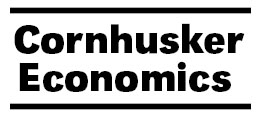Agricultural Economics, Department of

Cornhusker Economics
Date of this Version
3-12-2008
Document Type
Newsletter Issue
Citation
Cornhusker Economics
Abstract
Over 300 women from across the state participated in the 23rd Women In Agriculture Conference held February 21-22, 2008. For some, it was their first time attending the conference, and for others it was their 23rd. Participants spent time listening to keynote speakers, participating in topic specific workshops and socializing. The women also had the opportunity to learn about new things happening in the agricultural industry by visiting with booth attendants and talking with the sponsors of the conference. “I enjoyed the positive attitude that rubbed from one person to another – such fun!” said a participant from Gosper County.
The conference had over 35 workshops in five sessions, covering topics such as: GPS usage, farm bill, beginning farmer programs, accounting, estate planning, Excel features, business plans, cow-calf records, stress management and many more! These workshops were designed for women to hear about specific information they could use on their farms, ranches or businesses throughout the year. When asked what changes participants plan to make within the current year as a result of the conference, one participant from Nuckolls County said she will “put up a new machine shed because of the tax change she was informed about.”
Three optional FunShops were also a part of the program on Thursday evening. Nebraska State Patrol Sergeant Jim Stover talked about personal safety. He showed the women techniques on how to get out of an unwanted harassment situation, and then gave them time to practice what they had learned. Another one of the FunShops, Step into Gardening, gave them a chance to get their hands dirty by making a stepping stone they could take home with them on Friday. The final FunShop helped workshop attendees learn basic techniques on buying and selling items on eBay.


Comments
Published in Cornhusker Economics, 3-12-08. Produced by the Cooperative Extension, Institute of Agriculture and Natural Resources, Department of Agricultural Economics, University of Nebraska – Lincoln. http://www.agecon.unl.edu/Cornhuskereconomics.html